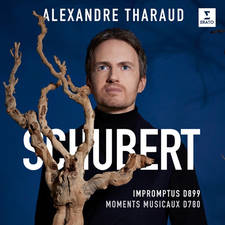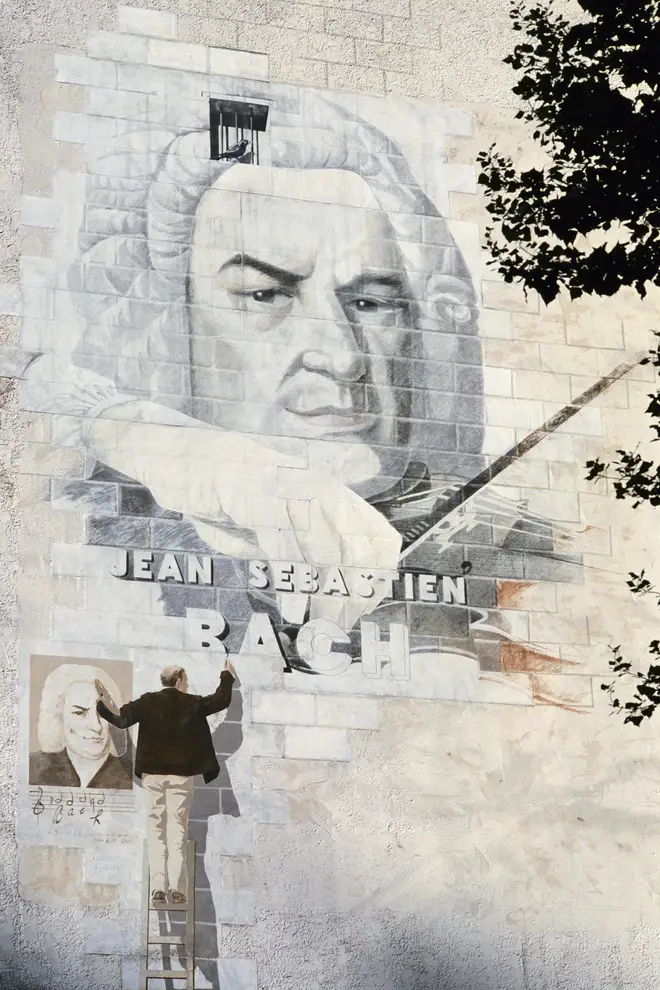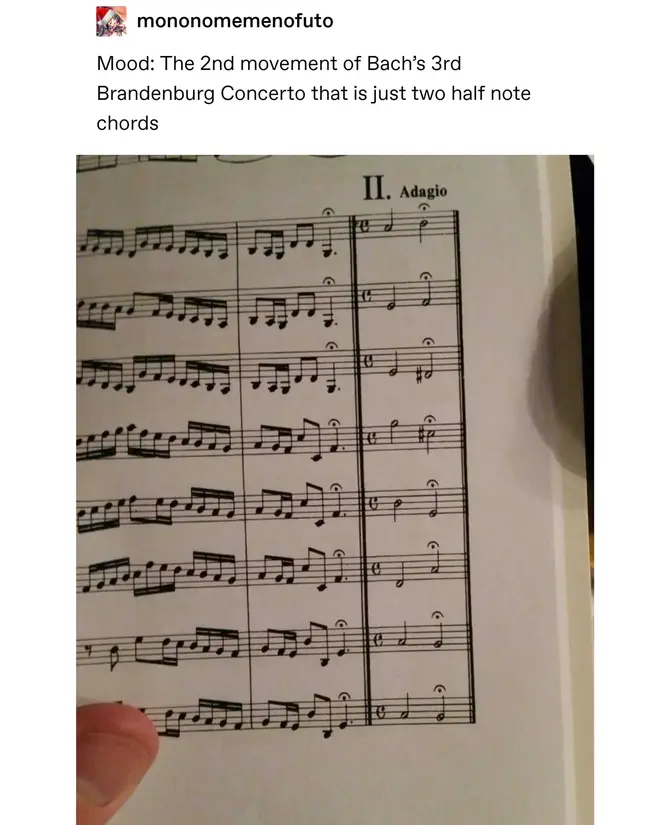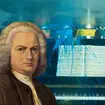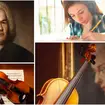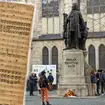Happy 300th birthday to the six Baroque concertos that changed the world
24 March 2021, 07:19 | Updated: 24 March 2021, 09:01
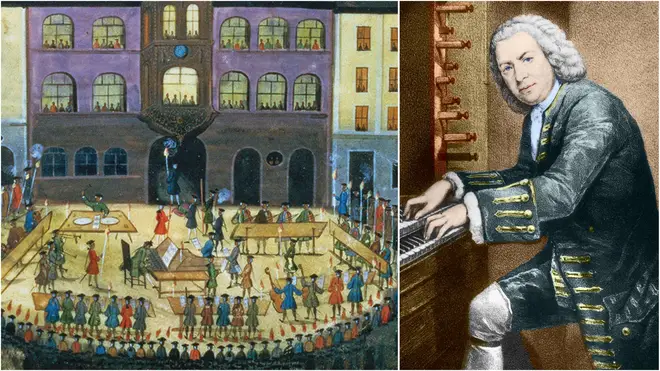
Six incredible works of art, and six reasons they changed everything.
In 1721, Johann Sebastian Bach carefully packaged together six of his finest concertos and sent them to a Christian Ludwig, Margrave of Brandenburg.
Bach also included a note, dated to 24 March 1721, in which he, in the most deferential language, asks for work and offers himself in “most humble duty to Your Royal Highness”.
It’s considered one of the most famous job requests in music history. Sadly, Bach did not hear back from the Margrave, but we are left with a half dozen absolute masterpieces of Baroque music.
Today, the Brandenburg Concertos turn 300. Here’s how they changed the world...
-
They redefined the concerto and took it to new heights
These concertos are in concerto grosso, literally ‘big concerto’, form, which is when a large number of instruments takes on solo roles. The form was pioneered by Italian composers like Arcangelo Corelli. And though he never visited Italy, Bach was fascinated by concertos from the South, and spent time studying and transcribing them.
In his Brandenburg Concertos, Bach made concerto grosso his own and took the form to new heights. He stretched and expanded the musical possibilities and gave each instrumental family solo opportunities, in inventive and evocative combinations. Listen to the stately, noble horns of the first concerto below.
And of course, as with all Bach, the music was just the greatest.
Read more: Q: How many children did J.S. Bach have? A: Loads. Here’s what we know. >

Bach: Brandenburg Concerto No. 1 in F major, BWV 1046 (Orchestra Mozart, Claudio Abbado)
-
They were subversive and spoke truth to power
Johann Sebastian Bach composed these pieces during his years spent as a court composer to the music-loving aristocrat, Prince Leopold of Anhalt-Köthen. Before he had bundled them up and popped them in the mailbox to the Musgrave, they would have very likely been performed at grand evenings at Leopold’s palace.
Court music at the time was full of pomp, conventions and puff. Dances, instrumentation and movements were all in a strict style, and you probably didn’t want to ruffle too many aristocratic feathers in your music.
Yet, in these concertos, Bach did just that.
Bach was a traditionalist, so he kept things outwardly straight, but in the subtle and inner details of his concertos, he made his statements. And it would not have gone unnoticed within the ruling class.
Bach’s music was never really that political, but it did reflect his deeply held Lutheran and scriptural ideals: that the lowly shall be exalted, and the last shall be first, and that heavenly joy was for all.
In the fourth concerto, a lofty solo violin part is continually overshadowed by a duo of lowly recorders. And in the sixth concerto, he placed two violas (that were considered rather low-rent at the time), equally alongside two violins, then considered the most aristocratic of instruments, which the prince himself played.
Bach scholar Michael Marissen explains how aristocratic audiences would have listened to these concertos live and heard this all as an “egregious breach of musical and social decorum” and a musical illustration of a “world upside down”, as societal norms began to be turned on their heads and Bach showed that all of us – whether trumpet, viol, viola or violin – are equal.
Cool, huh?
A Mural of Bach in Paris. Picture: Getty -
They have a deeply beautiful two-chord movement
These concertos, with inventive harmony, complex counterpoint, multi-layered fugues and interweaving textures, showcase Baroque music at its most intricate, detailed and mind-bogglingly intellectual, extreme.
But Bach also shows us that great art is so much more than just complexity for its own sake. The second movement of the Brandenburg Concerto No. 3 consists of just two perfectly placed chords.
Because when you can say it perfectly with a couple of notes, who needs more?
Brandenburg Concerto No. 3. Picture: Tumblr / mononomemenofuto -
They fought fascism
Adolf Busch was a very famous violinist in 1920s Germany, In 1927, with the rise of Adolf Hitler, Busch denounced Nazism and emigrated to Switzerland and then to America.
In the US, the virtuoso formed the Busch Chamber Players to promote the deep, beautiful and transformative aspects of German culture, and to use art to stand against the tyranny of Hitler, Nazi nationalism, and their view of his country.
His ensemble’s 1935 recording of the Brandenburgs was an international bestseller and helped bring this music, and its life-giving essence, to millions for the first time.
It also served to bring these long-overlooked works to the music-loving public again.
Fighting fascism with Bach’s music. Powerful stuff.

Bach Brandenburg Conerto No 4 Busch, Moyse
-
They gave us the first harpsichord rock star solo
The Brandenburgs are a concerto grosso for violin, flute and harpsichord, with an infectious, scurrying theme to the first movement. However, about two-thirds of the way through, the orchestra and two soloists slowly fade away.
What’s left is a solo harpsichord player, who sets about in what must be one of the most outrageously incredible moments in all music. With unprecedented virtuosity, the soloist (who was probably the composer) dazzles with flurries of notes and cascading scales in an epic cadenza for the ages.
The music makes it feel as if the harpsichordist is in some mammoth arena with thousands of fans screaming and cheering on the virtuosity. It’s plain rock-star stuff.
These concertos predate Bach’s later Keyboard Concertos, so this Brandenburg can claim to be one of the very first keyboard concertos and a virtuoso tradition that went on to define the music of the Romantic period.
Read more: The best Romantic era composers >

Bach - Brandenburg Concerto No. 5 in D major BWV 1050 - Sato | Netherlands Bach Society
-
They teach us to have faith and persevere in our own life and work
Bach is now (rightly) regarded as one of the world’s greatest geniuses, and a musical figure of almost god-like statue. But during his own life, he was often overlooked, under-appreciated, and dismissed as a bit old-fashioned.
Throughout his lifetime, he was plagued with professional disappointments and let-downs. Job enquires, and hopes for new musical pastures, often went unanswered and unfulfilled.
But through it all, Bach stayed true to what he wanted to do. He composed music for his church, family and friends. He remained steadfast and wrote music to teach, share, and bring joy and fascination to those he loved.
As a job application, the Brandenburg Concertos failed at the time. But now they bring joy to more people than Bach could have ever dared to comprehend – and every note cries out a message saying: “stay true, keep the faith, create, and the world will be enriched forever.”

Bach’s Brandenburg Concerto No. 3 played by Lydia, Timothy, Miles and Oliver Lallemant
On 24 March 2021, we’re celebrating the 300th anniversary of Bach’s Brandenburg Concertos on Classic FM. Hear these incredible works by listening throughout the day on Global Player.
